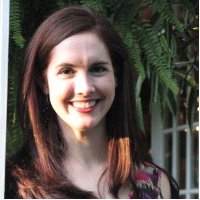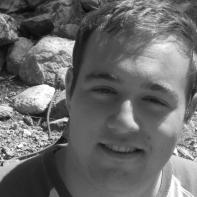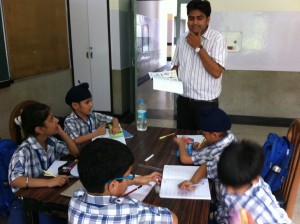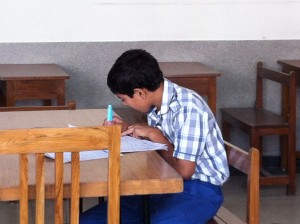
Davon Loeb 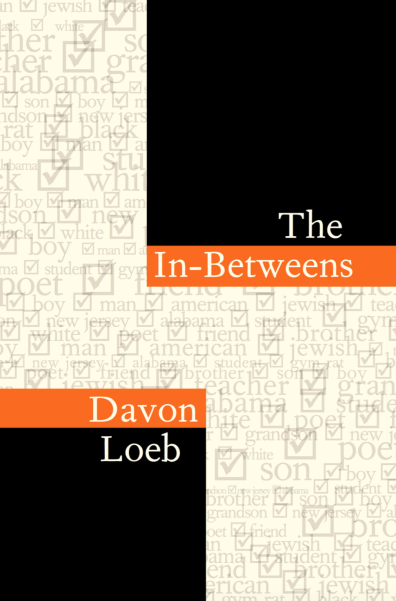
This interview was conducted via email by Summer Blog Editor Kelsey Kerley. It regards Davon Loeb’s memoir, The In-Betweens (published in 2018) as well as his process and experiences as a writer and educator.
Davon Loeb is the author of the lyrical memoir The In-Betweens (Everytime Press, 2018). He earned an MFA in Creative Writing from Rutgers-Camden, and he is an assistant poetry editor at Bending Genres and a guest prose editor at Apiary Magazine. Davon writes creative nonfiction and poetry. His work has been nominated for two Pushcart Prizes and one Best of the Net, and is forthcoming and featured in Ploughshares Blog, PANK Magazine, Pithead Chapel, Mauldin House, JMWW, Barren Magazine, Split Lip Magazine, Tahoma Literary Review, and elsewhere. Besides writing, Davon is a high school English teacher, husband, and father living in New Jersey. Currently, he is writing a YA novel. His work can be found here: davonloeb.com and on Twitter @LoebDavon.
The In-Betweens is a coming of age journey about a biracial boy who is trying to navigate the nuances, struggles, and joys of growing up in two different cultures, a Black family and a white-Jewish family, while living in non-diverse communities. This memoir, written as poetic flash and lyrical nonfiction, explores how racial and cultural identity is shaped through family, friends, and community, as well as how each of these factors are deeply complex and tumultuous, especially in the very divided America we have today. And as noted by Paul Lisicky, author of The Narrow Door: A Memoir of Friendship and Later, “…The In-Betweens is awake to the awe of being in a boy, and the beauty and danger of negotiating a culture that wants to drive space between us, inside us.”
Superstition Review: Could you describe the inspiration for your memoir The In-Betweens?
Davon Loeb: My inspiration for my memoir The In-Betweens was really about trust—trusting myself, in my stories, in my craft. Ever since I was young, I was imaginative. Writing this collection was just about going back to being that little kid again, back to a world of make-believe, to when I was encouraged to dream, to tell stories. Sure, the MFA helped develop some skill, but this was about the persistence that followed. I was inspired to do the work, to write, to commit to this collection.
SR: Some of the chapters that stuck with me most as I read your memoir were the one-page chapters, the small snippets of a moment in time that were packed with emotion. Could you please discuss your process for writing the sections?
DL: I wrote those chapters to tell a story, and sometimes that story only grew into a paragraph or a page simply because the memory itself was small; it was a fragment, but the emotion was still like a hot wire. So I tried to lean into single images as support for the frame of those smaller chapters. In the chapter “5-Series BMW”, my stepfather is working on his car in the garage. The BMW is an image in itself but also a symbol for masculinity. Instead of explaining masculinity, the image and the symbol do the work for me. Once there, in the minute of the moment, I need to trust in the storytelling—really believe in the brevity. After finishing the memoir, I realized these flash chapters balanced the book well.
SR: You’ve managed to capture so many unique moments of your own childhood while still making them relatable to the reader, creating a sense of nostalgia and memory of things they have never known. Which memoirs and memoir authors inspired you?
DL: I intentionally wanted to capture memories that readers could identify with. I’m a real believer that it’s sometimes our duty, as writers, to create universality through individual stories. I wanted my readers to experience the same dirt of childhood, to be hand over hand with me, through the joys, the laughter, the tears. I’m so glad it worked, and readers felt a connection to this little boy. In regard to reading memoir, the genre was actually new to me. I started my MFA as a poet and left writing memoir. A reasonably short list of some of my favorite memoir authors are the following: Paul Lisicky, Roxane Gay, Porochista Khakpour, Tyrese Coleman, Chloe Caldwell, Tracy K. Smith, and more names I know I’m missing. I actually read more poetry than memoir, and that list would be too long.
SR: As well as being a writer, you are also a teacher. How has your experience as an educator influenced your writing?
DL: So much of writing is being vulnerable, which is like teaching. I believe the best teachers are the ones who are not afraid to be themselves, not afraid of getting “eye-level” with their students. When writing this memoir, I took the same approach. I said, “This is who I am. I am not scared to show you,” because readers can see through a façade as quickly as students can. But the relationship between the two is also evident in my craft as a writer and educator. I teach Literature and Composition; I read and write all day. This is my life, a muscle always at use. Consider this: as writers, we are constantly changing, a course of lifelong revisions; in the same way, teachers are forever adapting, sometimes in the moment in a classroom or as society shifts, like now, during a health pandemic. Nonetheless, these roles are inseparable; they are equally part of my identity, and I could not do one without the other. Though it can get messy. My students love to Google me, and read my book, which is cool, but sometimes makes for an interesting conversation. The point I try to impress is that I am forever in it, forever learning, forever a student.
SR: One of the main factors of an identity that you discuss in The In-Betweens is race. How did you go about addressing this topic and what did you find most challenging about it?
DL: Discussing race is definitely the crux of a lot of my writing. I try to focus on race as something fluid, rather than stone. I want readers to value my experiences, as well as understand that my experiences are not the tell-all stories of racism or the entire black experience. I felt especially confronted with my race or my blackness in the last couple months, during the protests and public murder of George Floyd. I’m biracial. I grew up in a predominantly white community. While some aspects of my upbringing were discriminatory, I still had a great childhood and adolescence. There’s a duality that exists here, in the danger of being a minority, but also this safety in racial ambiguity. That is challenging to write about, to straddle two cultures. So instead of steering away from that, I drive forward, push to the uncertainty, the in-between of my race, of where I fit in this American narrative.
SR: As an educator, what impact do you think or hope books like your own will have on younger generations?
DL: I hope books like mine will help students who have never read an author that looks like me to realize different authors do exist beyond what they’ve read since starting education. Different stories exist, ones that are similar or dissimilar from their own. I want my students to know that the writing community is incredibly diverse. I believe that if our Nation wants to rewrite its identity, it starts here, with books in schools. As an educator, I really hope, if anything, something I’ve said will inspire younger generations to tell their stories, and know, really know, their stories matter.
SR: One of the most notorious issues in English education is a lack of diversity in the voices and stories children experience in the classroom. Have you seen any indication of a change in this pattern? What steps do you think need to be taken to increase literary diversity in the classroom?
DL: Yes! Education is changing. We need to take some steps away from the Canon. Sure, continue to read and teach Shakespeare, of course, but syllabi and curriculums need to change and adjust the perimeters to what is literature. When I was a kid, my mother required me to read books by black authors, but in school, that rarely happened. So what do we say to the kid who has never read a book with a character similar to them? Do we tell them their stories don’t matter to us? To give an example, there’s a children’s book, Farah Rocks Fifth Grade by Susan Muaddi Darraj, who is a wonderful author, and Farah is the first Arab-American character I have ever seen in a children’s book. I think about that, and it makes me so sad and disappointed. I think about that kid who is Arab-American and has never, ever, read a book about them. I think about the kid who knows nothing about Arab-Americans besides the single narrative often depicted in the media, and that kid maybe needs a book like Susan’s more than the other. For our society to grow, the required-reading list needs to reflect our country. But to get there, for these stories to arrive on our students’ desk, we need education to change as much as publishing needs to change. We need diverse leadership like Lisa Lucas, the Vice President & Publisher of Pantheon and Schocken Books, who is reshaping the publishing industry.
SR: In “Thoughts On Hair,” you portray the plight of racially ambiguous and mixed race children attempting to fit in. You emphasize in particular how you have experienced the perception of your race changing based upon how you style your hair. What do you think experiences like that among others say about the way racially ambiguous people are perceived in our society? Do you think this perception has changed since you were a child, and if so, how?
DL: As a child, I struggled growing up in a black family where I was biracial while living in a white community where I was non-white. I was regularly in-between cultures. But I do believe the perception of racially ambiguous people has changed since I was a child. We have always been here; but I think through entertainment: television, movies, sports, books and other media, the focus has shifted toward people of mixed race rather than away from them. While this should not denounce people who are not racially ambiguous, I can barely think of any professional athletes who were biracial when I was a kid. Today, one of the highest paid quarterbacks in the NFL is biracial; he is the face of the NFL. Though that has other implications, it also says something about our society, good or bad. On a personal note, I am interracially married and have a biracial daughter. My wife and I will raise her in a way where we celebrate all of her multitudes, rather than just focusing on her differences.
SR: The In-Betweens was first published in 2018. Now, in late 2020, we have seen a shift in the sociopolitical climate as more and more people are becoming aware of social justice issues and movements. Have you found that reactions to your work have changed now that the present context is so different than it was when you originally published?
DL: Thank you for asking this question. In 2018, my book was important to me, to the friends and family who supported my work, and the small group of writers and editors who valued this collection, some of whom even wrote reviews of The In-Betweens. For them, I am forever grateful. People like Chris Campanioni, Steve Burns, Yi Shun Lai, Roy G Guzmán, and Paul Lisicky, thank you. Now, in late 2020, the shift in the sociopolitical climate has given my memoir a new life, a resurgence. I have always believed these stories of race, identity, and culture were important, but it feels like a greater interest is stirring. I’m not sure what that means—more sales or more reviews or whatever; but I do know that it means my story can reach you and maybe before it could not. That is important and invaluable. I’m fortunate that literary journals and magazines have repurposed and republished chapters of my memoir. These literary spaces have offered a second home to my work. I am grateful for the reviews and interviews that are still happening in 2020, almost two years after publication. Yes, the context has absolutely changed, and my gratitude for the love and support of The In-Betweens is so immense.
SR: This book has much to do with several varieties of learning, from learning about yourself and your family to learning about your greater identity as part of a whole. What is the main take away you want your readers to gain after having experienced all this learning with you?
DL: The main take away I want readers to gain after experiencing this with me is to learn that we are more similar than we are different. I might be of another race, culture, or what have you, but the stories that make me who I am are just like the stories that shape you. My identity is rich, and I’ve learned to love who I am and all that I am through storytelling, through writing this memoir. In a way, we write our own memoirs every day—through photos, videos, posts, calls, and texts, we are forming our memories of life into an order of things. Writing The In-Betweens was my attempt to order my life, to order it with purpose, with an attention to cadence, image, and sentiment. I want you to experience that; I want you to read my book, but I’m okay if you don’t. I would rather you partake in your own memoir, in whatever form it will be, but do it, believe in it, and share it. You’ll realize just like I did that what connects us is stronger than what divides us.
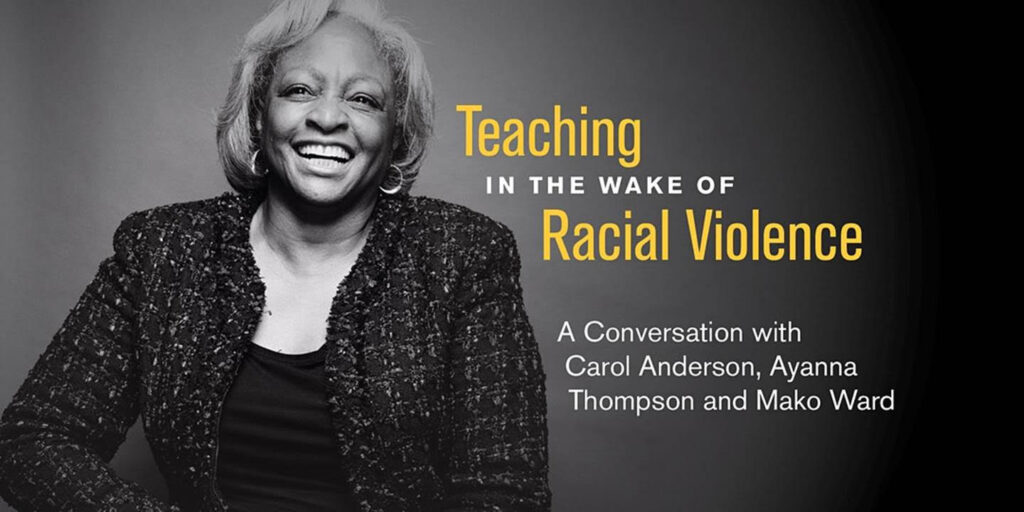
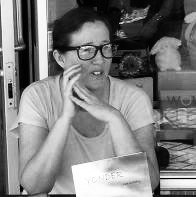

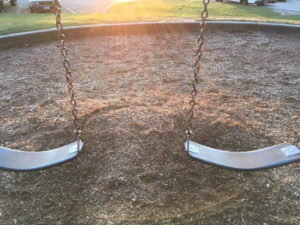 When I was in grade school, I learned a couple of important tips to surviving middle school. One was to keep your mouth shut if it didn’t involve you. The other— really, there is no need to bring up the other because it paled in comparison. For example, I no longer need to know how to make an ice ball to fight back, or how to conceal rocks in my pocket, or how to kick if I’m attacked while lying on my back. It took me decades, but I eventually learned how to avoid trouble.
When I was in grade school, I learned a couple of important tips to surviving middle school. One was to keep your mouth shut if it didn’t involve you. The other— really, there is no need to bring up the other because it paled in comparison. For example, I no longer need to know how to make an ice ball to fight back, or how to conceal rocks in my pocket, or how to kick if I’m attacked while lying on my back. It took me decades, but I eventually learned how to avoid trouble.
